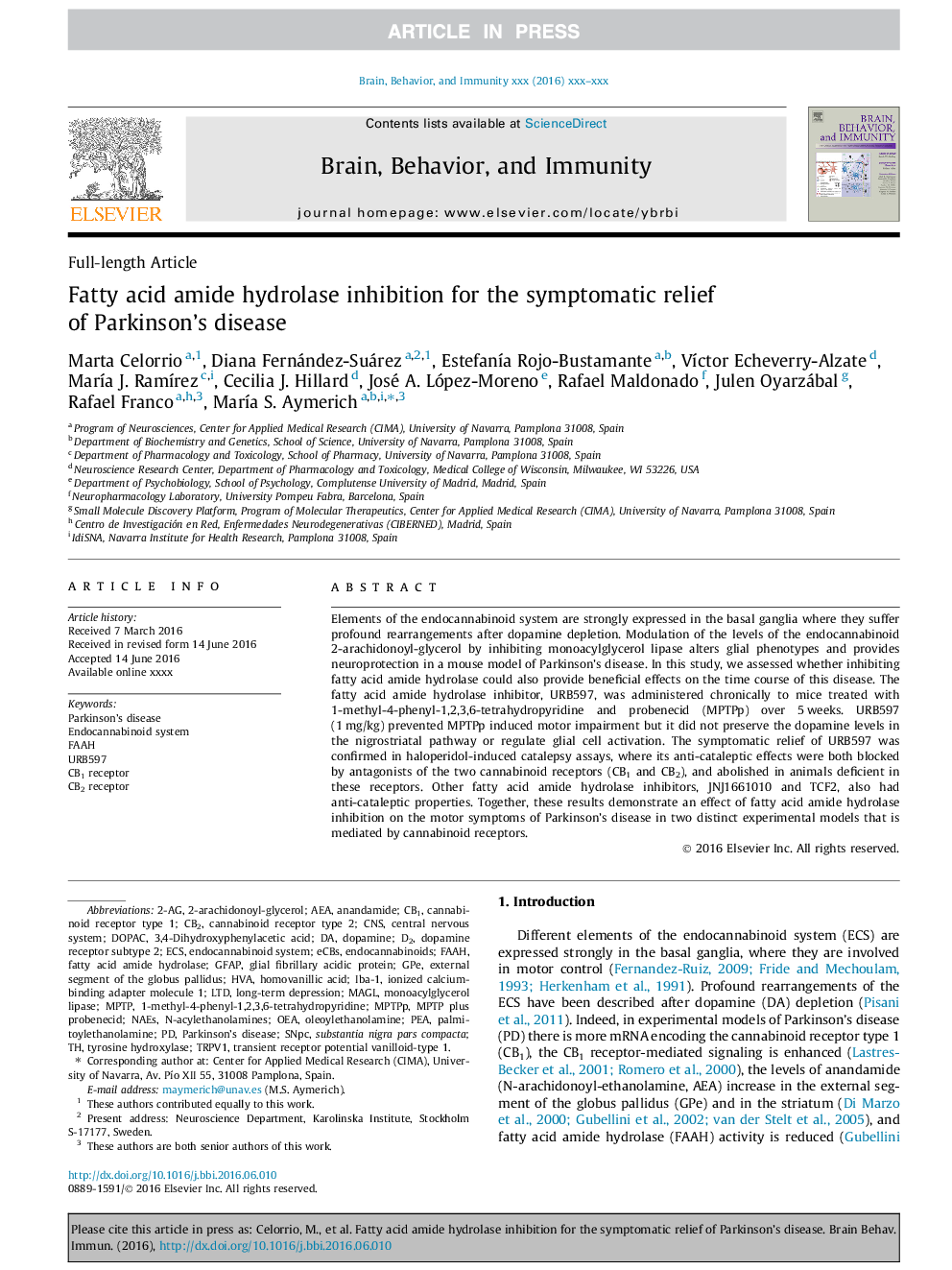| Article ID | Journal | Published Year | Pages | File Type |
|---|---|---|---|---|
| 5041013 | Brain, Behavior, and Immunity | 2016 | 12 Pages |
Abstract
Elements of the endocannabinoid system are strongly expressed in the basal ganglia where they suffer profound rearrangements after dopamine depletion. Modulation of the levels of the endocannabinoid 2-arachidonoyl-glycerol by inhibiting monoacylglycerol lipase alters glial phenotypes and provides neuroprotection in a mouse model of Parkinson's disease. In this study, we assessed whether inhibiting fatty acid amide hydrolase could also provide beneficial effects on the time course of this disease. The fatty acid amide hydrolase inhibitor, URB597, was administered chronically to mice treated with 1-methyl-4-phenyl-1,2,3,6-tetrahydropyridine and probenecid (MPTPp) over 5Â weeks. URB597 (1Â mg/kg) prevented MPTPp induced motor impairment but it did not preserve the dopamine levels in the nigrostriatal pathway or regulate glial cell activation. The symptomatic relief of URB597 was confirmed in haloperidol-induced catalepsy assays, where its anti-cataleptic effects were both blocked by antagonists of the two cannabinoid receptors (CB1 and CB2), and abolished in animals deficient in these receptors. Other fatty acid amide hydrolase inhibitors, JNJ1661010 and TCF2, also had anti-cataleptic properties. Together, these results demonstrate an effect of fatty acid amide hydrolase inhibition on the motor symptoms of Parkinson's disease in two distinct experimental models that is mediated by cannabinoid receptors.
Keywords
MPTPURB5972-arachidonoyl-glyceroleCBsexternal segment of the globus pallidusCB2FAAHDOPACCB1magl2-AGN-acylethanolaminesNAEsTRPV1GPEAEAGFAPPEA1-methyl-4-phenyl-1,2,3,6-tetrahydropyridine3,4-dihydroxyphenylacetic acidECsIba-1OEASNpcanandamideFatty acid amide hydrolaselong-term depressionendocannabinoidsParkinson’s diseasesubstantia nigra pars compactatyrosine hydroxylaseCNSDopamineendocannabinoid systemcentral nervous systemmonoacylglycerol lipaseLTDionized calcium-binding adapter molecule 1cannabinoid receptor type 1homovanillic acidGlial fibrillary acidic proteinHVACB1 receptorCB2 receptorcannabinoid receptor type 2
Related Topics
Life Sciences
Immunology and Microbiology
Immunology
Authors
Marta Celorrio, Diana Fernández-Suárez, EstefanÃa Rojo-Bustamante, VÃctor Echeverry-Alzate, MarÃa J. RamÃrez, Cecilia J. Hillard, José A. López-Moreno, Rafael Maldonado, Julen Oyarzábal, Rafael Franco, MarÃa S. Aymerich,
